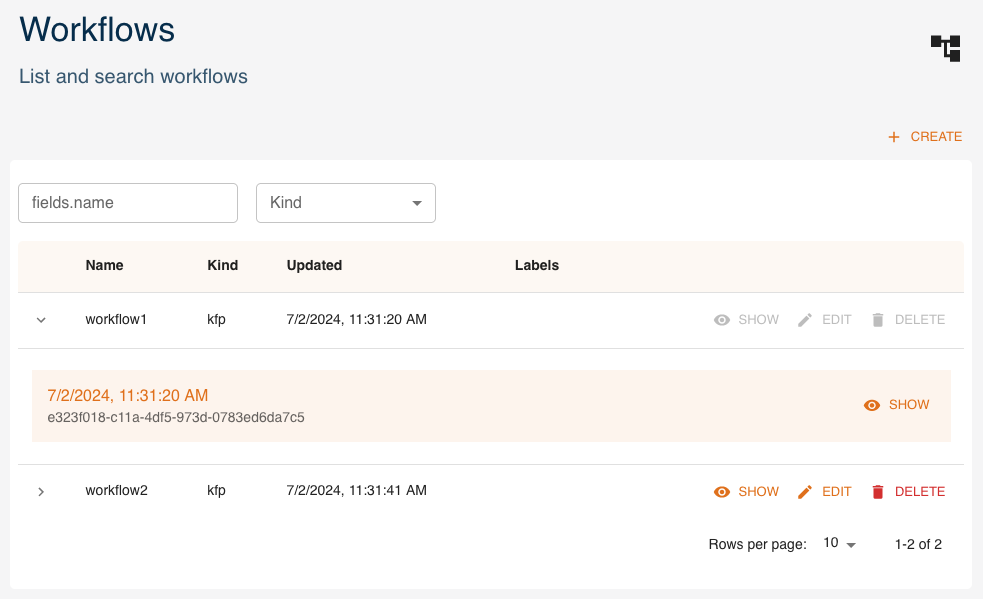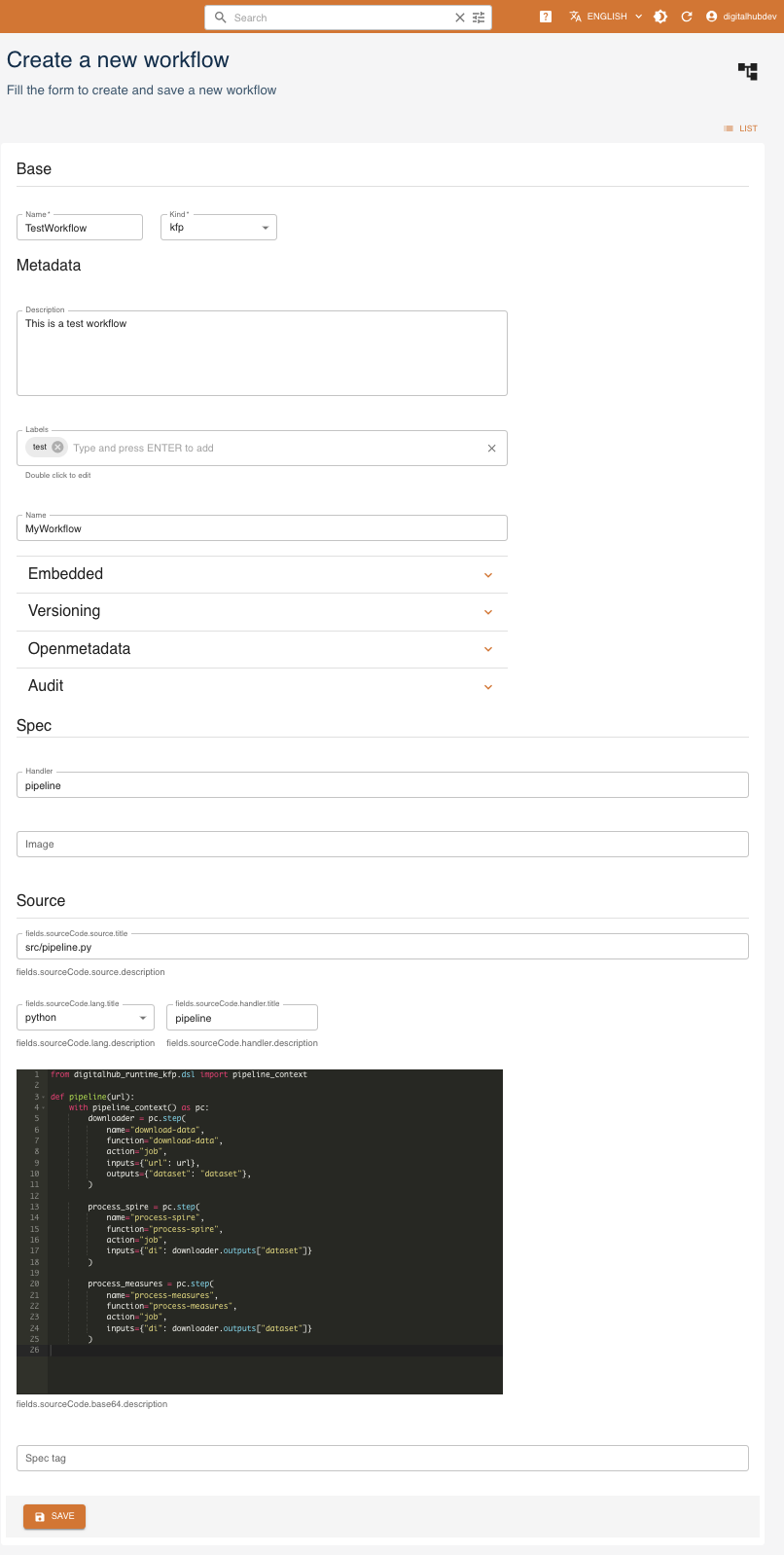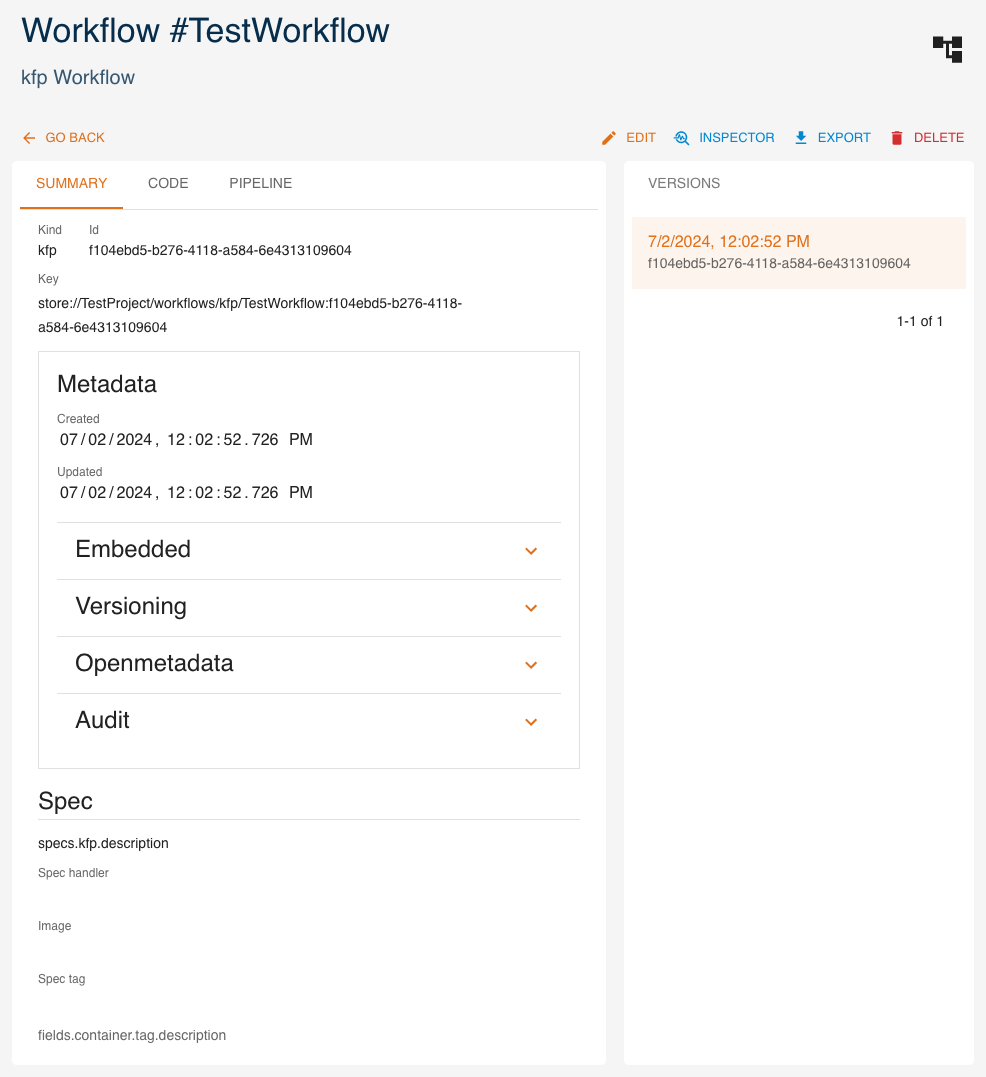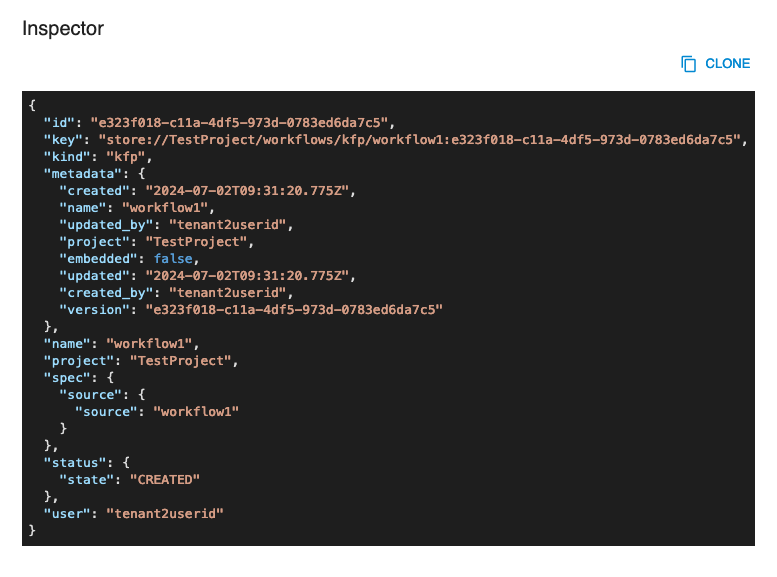Workflows
Workflows allow for organizing the single operations in a advanced management pipelines, to perform a series operation of data processing, ML model training and serving, etc. Workflows represent long-running procedures defined as Directed Acyclic Graphs (DAGs) where each node is a single unit of work performed by the platform (e.g., as a Kubernetes Job).
As in case of functions, it is possible for the platform to have different workflow runtimes. Currently, the only workflow runtime implemented is the one based on Kubeflow Pipelines infrastructure. See KFP Runtime for further details about how the workflow is defined and executed with the Kubeflow Pipelines component of the platform.
Similarly, to functions the workflows may be managed via console UI or via Python SDK.
Management via UI
Workflows can be created and managed as entities from the console. You can access them from the dashboard or the left menu. You can:
createa new workflowexpanda workflow to see its 5 latest versionsshowthe details of a workflowedita workflowdeletea workflowfilterworkflows by name and kind

We will now see how to create, read, update and delete workflows using the UI, similarly to what is done with the SDK.
Create
Click CREATE and a form will be shown:

Mandatory fields are:
Name: name and identifier of the workflowKind: kind of workflow
Metadata fields are optional and may be updated later.
Description: a human-readable descriptionLabels: list of labelsName: name of the functionEmbedded: flag for embedded metadataVersioning: version of the functionOpenmetadata: flag to publish metadataAudit: author of creation and modification
In case of a kfp workflow, the source code and handler fields are required as well.
Read
Click SHOW to view a workflow's details.

On the right side, all versions of the resource are listed, with the current one highlighted. By clicking a different version, values displayed will change accordingly.
The INSPECTOR button will show a dialog containing the resource in JSON format.

The EXPORT button will download the resource's information as a yaml file.
In case of kfp workflows, the executions of the workflow instances can be monitored with the corresponding DAG viewer.

Update
You can update a workflow by clicking EDIT. Greyed-out fields may not be updated.
Delete
You can delete a workflow from either its detail page or the list of workflows, by clicking DELETE.
Management via SDK
Workflows can be created and managed as entities with the SDK CRUD methods. Check the SDK Workflows documentation for more information.